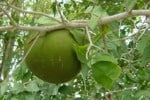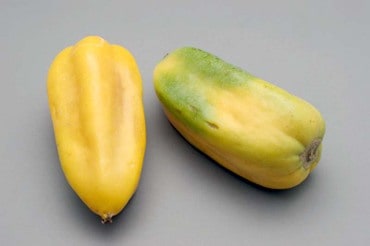The lychee is the sole member of the genus Litchi in the soapberry family,Sapindaceae. It is a tropical and subtropical fruit tree native to China, and now cultivated in many parts of the world. The fresh fruit has a “delicate, whitish pulp” with a “perfume” flavor that is lost in canning, so the fruit is mostly eaten fresh.
Lychee is an evergreen tree, reaching 10–20 m tall, bearing fleshy fruits that are up to 5 cm (2.0 in) long and 4 cm (1.6 in) wide. The outside of the fruit is covered by a pink-red, roughly-textured rind that is inedible but easily removed to expose a layer of sweet, translucent white flesh. Lychees are eaten in many different dessert dishes, and are especially popular inChina, throughout South-East Asia, along with South Asia.
Lychee is cultivated in China, and in a narrow belt throughThailand, northern Vietnam, and northern India, particular Biharwhich accounts for 75% of total production. South Africaand the United States (Hawaii and Florida) also have commercial lychee production.
Lychee has a history of cultivation, going back as far as 2000 BCE according to records in China. Cultivation began in the area of southern China, Malaysia, and northern Vietnam. Wild trees still grow in parts of southern China and on Hainan Island. There are many stories of the fruit’s use as a delicacy in the Chinese Imperial Court. It was first described and introduced to the west in 1782.
Most Americans are only familiar with lychee as an item on the dessert menu at Chinese restaurants. Often erroneously called ‘lychee nuts’, the fruit is indigenous to China and popular for snacking or desserts. On the tree, the lychee is protected by a bumpy, leathery rind that is inedible. This rind easily comes away from the juicy flesh of the fruit, which is translucent and a pearly white color. It is sweet and crispy, and wonderful to eat fresh.
Lychee is also found canned or dried. Slightly smaller than anapricot, fresh lychees make great lunch-bag additions, since the rind protects the fruit until you are ready to eat it. Canned lychees can be used to make a fruit cocktail more exotic and interesting. In the center of the lychee fruit is a hard seed or nut, which is discarded. It is inedible, like the rind, and slightly toxic.
Health Benefits of Lychee
- Lychee helps in increasing the energy of the body.
- It increases fluids in the body, which are required for good health.
- It enhances the feeling of well being.
- Lychee is extremely rich in Vitamin C and contains approximately 40 percent more vitamin C than orange.
- It even has high levels of Beta carotene, greater than that found in carrots.
- Lychee is considered diuretic and digestive.
- It contains unsaturated fatty acids, which help in the absorption of beta carotene, and many other fat soluble vitamins.
- It even helps to prevent blood clots, severe cell damage and reduces strokes, up to 50%, in heart attack patients.
- It is a good source of carbohydrates and fiber, which are quite essential for the body.

